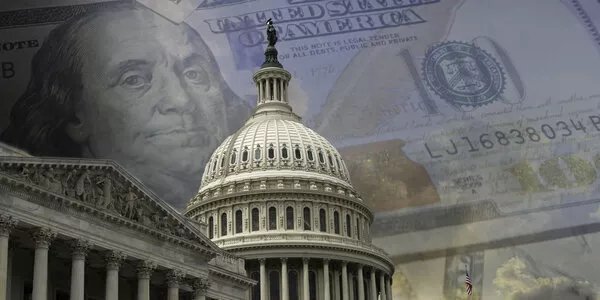
Weekly Update - Good combination for stock markets
Recent economic data continues to support our scenario of gradually easing inflation and a soft landing for the United States economy. This combination should give the US Federal Reserve (Fed) and other major central banks room to start slowly cutting interest rates. History suggests this conjunction of a soft landing and rates cuts should help sustain equity markets in 2024 – supporting our Overweight positioning on equity markets with a bias toward the US and Europe. A similar conjunction in the past has proved especially bullish for tech firms, suggesting AI stocks could also remain strong.
Soft landing and rate cuts: a combination seen many times before. As well as presiding over a sharp decline in inflation, the Fed seems about to pull off a soft landing for the economy. Without wishing to detract from this achievement, we note that we have seen this story before several times in the last fifty years: 1980 (brief recession), 1984 (soft landing), 1989 (soft landing preceding a recession), 1998 (Asian and LTCM crises) and 2019 (before Covid dragged the economy into an “artificial” recession). So, a soft-landing scenario is not quite as exceptional – and hence almost unthinkable – as some seem to think. What is more, analysing the history can tell us a lot about where markets might be heading this time round.
Equity markets tend to prosper under this combination of circumstances. The two side Charts show the trend in the US market and its constituent sectors during previous rate-cutting cycles amid an economic soft landing. We restricted ourselves to the US market for two reasons: it has a sufficiently long historical records and is the leading market whose performance is generally replicated by others. As Chart 1 shows, US equity markets have usually made big gains – between 10% and 30% – in the 12 months following the first rate cut in a soft-landing environment. What is more, in most cases these strong performances followed a year or more of strong rallies. Chart 2 breaks down US market performance by sector. This shows how periods of soft landing and falling rates have in the past been boom times for cyclical stocks, led by techs, consumer discretionary and communication values. Energy and more defensive sectors (such as utilities) have tended to lose ground in such periods. This reassures us in our Overweight to equities, with a bias toward US and European markets, and in our bets on stocks related to Artificial Intelligence.
What would happen if, instead of a slowdown, the US economy plunged into recession? This would stand the story on its head. In past severe recessions equity markets fell by 15-25% in the 12 months following the first rate cut, dragged down particularly by falls in cyclicals. To safeguard against such a risk, we remain constructive on bond markets, which ought to do well in this alternative scenario acting as a hedge against the recessionary risk.
In the highlights of the week, we chose to talk about Central banks' minutes as well as the companies' earnings reports:
The minutes of the American Federal Reserve sent out a relatively hawkish message. By reaffirming that, to begin its rate cut cycle, it wishes to ensure that inflation is on a sustainable downward trend towards the 2% target, the Federal Reserve is pushing back the expectations of the markets which are now only pricing in 3.5 rate cuts in the year. Additionally, most members flagged the risks that would arise from a premature rate cut. Conversely, only “a couple” of members warned of downward risks to the economy which would come from maintaining a restrictive policy for too long. Unsurprisingly, the ECB minutes also signal that a broad consensus within the Governing Council sees discussion on a possible rate cut as premature, with the risks of cutting too soon outweighing those of cutting too late.
To date, 526 out of 606 MSCI US companies have published their results. With profits up by an average of 7%, US companies’ earnings reflect the good health of the US economy. Driven by the "Magnificient 6" stocks and in particular NVIDIA, which once again beat market expectations, this earnings season has allowed the S&P500 to cross 5000 points for the first time in its history. In Europe, 185 stocks out of the 361 in the MSCI index reported positive results overall, with profits up 2.38%.





